Leopard sharks are fascinating bottom-dwelling sharks found in temperate waters across the globe. As with all marine life, leopard sharks must contend with potential predators lurking in their ocean environment. In this comprehensive guide, we will explore the different predators that hunt leopard sharks, how these sharks defend themselves, and their role in the marine ecosystem.
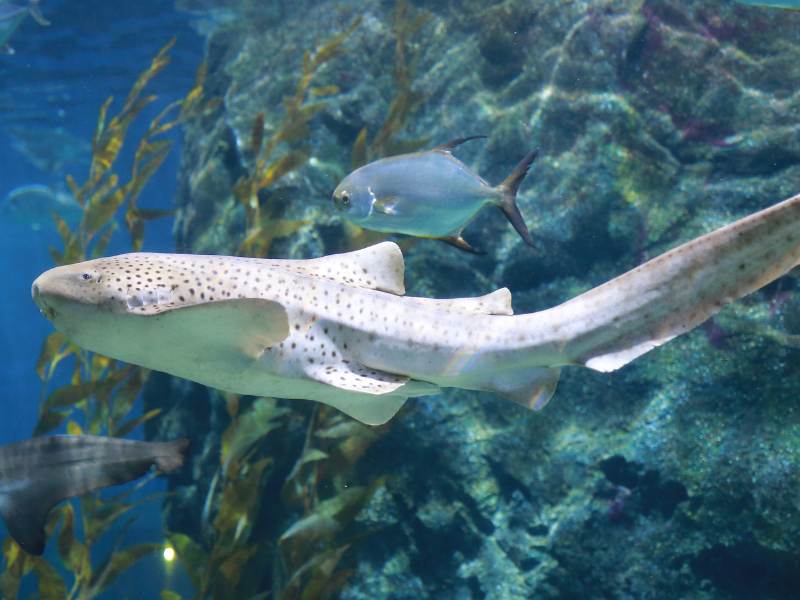
Major Leopard Shark Predators
Great White Sharks

As apex predators that inhabit similar coastal waters to leopard sharks, great white sharks certainly view the smaller leopard shark as potential prey. Great whites can grow over 20 feet in length, giving them an immense size advantage over leopard sharks that typically max out around 4 feet long. Their serrated teeth and powerfully muscled bodies allow great whites to easily overpower leopard sharks.
Broadnose Sevengill Sharks
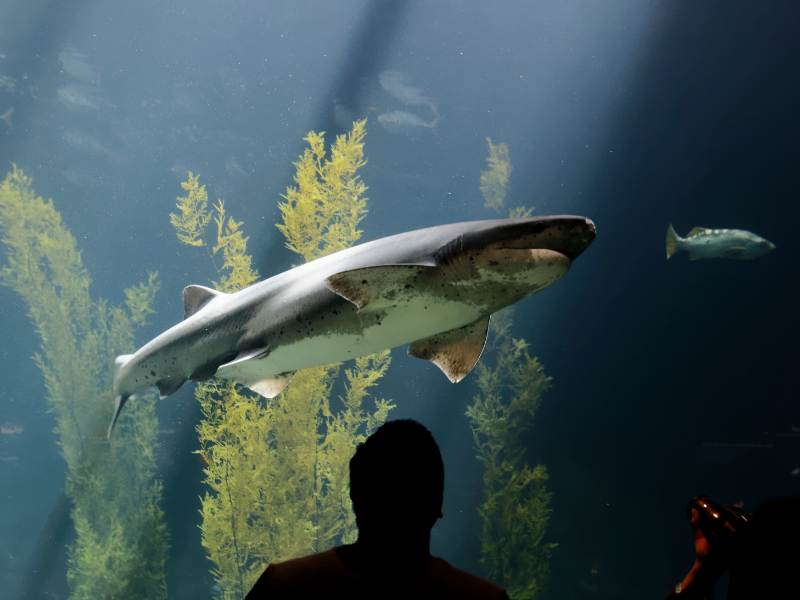
Another large shark that has been known to prey on leopard sharks is the broadnose sevengill shark. These deep-dwelling sharks can reach over 10 feet long and have a varied diet that includes smaller shark species like leopard sharks if encountered. Their wide mouths armed with multiple rows of teeth enable sevengill sharks to consume leopard sharks whole if necessary.
Marine Mammals
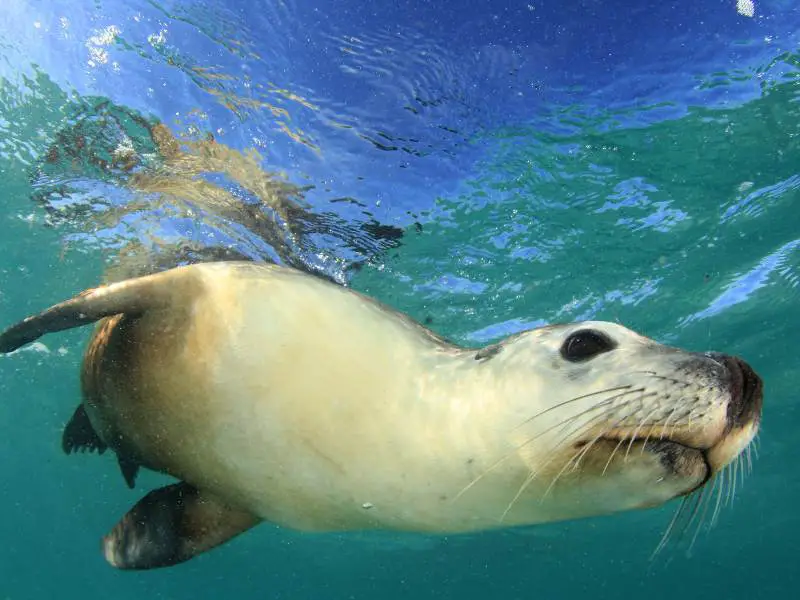
Sea lions, seals, and other marine mammals that inhabit the same coastal waters as leopard sharks may occasionally eat them. Opportunistic predators like California sea lions and leopard seals have been observed preying on leopard sharks if the opportunity arises. Marine mammals pose a threat through their abilities to rapidly pursue and overpower leopard sharks.
Humans
While leopard sharks are not usually the main target, they can occasionally fall victim to fishing nets and lines intended for other species. Their slow reproductive cycle makes leopard shark populations vulnerable to overfishing, whether intentional or incidental. However, many places now protect leopard sharks through fishing regulations and bans.
Also Read: Are Leopard Sharks Dangerous or Aggressive?
Additional Leopard Shark Predators
A few other, less frequent predators of juvenile or young leopard sharks include:
- Caspian Terns and Great Blue Herons – These large coastal birds have been known to snatch baby leopard sharks from shallow waters.
- Larger Shark Species – Should they encounter them, larger sharks like swell sharks or sevengill cow sharks may consume smaller leopard sharks.
- Marine Toxic Algae – Red tides and algal blooms occasionally occur that can be toxic to leopard sharks and other marine life if exposed.
So in summary, the main predators threatening adult leopard sharks are large predatory sharks and opportunistic marine mammals. Young leopard sharks must also contend with avian predators and face higher risks from other marine hazards.
How Does a Leopard Shark Protect Itself from Predators?
To protect themselves from these varied predators, leopard sharks have evolved some effective defense strategies:
- Camouflage – Their mottled brown and white coloring allows leopard sharks to blend into sandy bottoms, helping them avoid detection by both visual and tactile hunting predators.
- Schools for Protection – Leopard sharks often swim in loose aggregations, finding safety in numbers from predators targeting individuals. A large school is a more formidable target.
- Spots and Stripes – Their distinctive markings may serve to confuse or startle would-be attackers with their high-contrast patterns. Some researchers believe this also helps them blend into substrates.
- Venomous Spines – Leopard sharks have long, sharply pointed spines running along their back with a venom gland. A spine jab could inflict a painful wound, serving as a deterrent against most predators.
- Fast Burst Speed – Though not the speediest swimmers normally, leopard sharks can accelerate rapidly when threatened, helping them evade predators through short fast bursts rather than prolonged chasing.
So through camouflage, social behavior, defenses, and speed abilities – leopard sharks have adapted multiple natural protection strategies increasing their odds of surviving encounters with marine superpredators. However, larger threats like great whites are still able to prey on them at times.
Role in the Marine Ecosystem
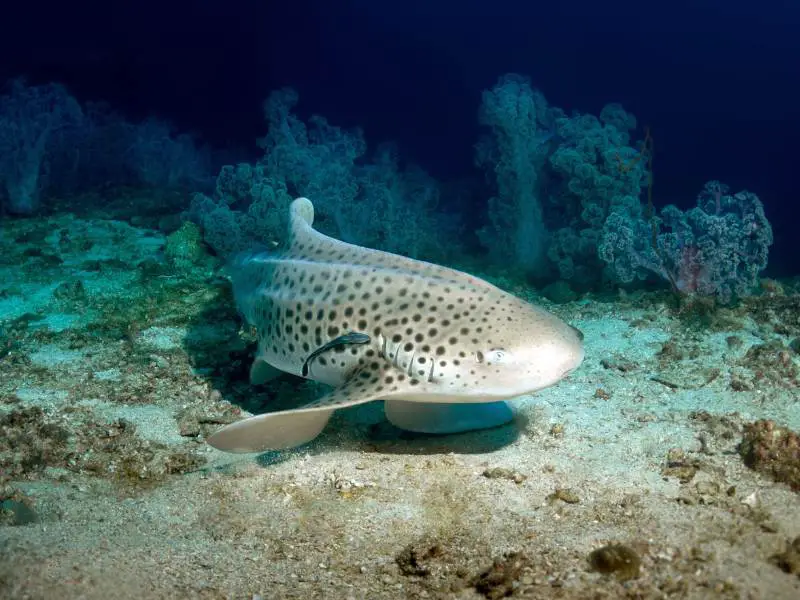
As both a predator and occasional prey species, leopard sharks fulfill an important ecological role within the temperate ocean ecosystems they inhabit. Some key aspects:
Apex Predator
Adult leopard sharks are a major predator of crustaceans, worms, small fish, and cephalopods in shallow waters. They help control populations of these smaller marine species.
Important Food Source
Larger shark species, mammals, and other predators rely on abundant forage fish like leopard sharks to meet their high-calorie and protein needs.
Links Trophic Levels
By preying on invertebrates and smaller fish but also falling prey to larger animals themselves – leopard sharks connect various trophic levels in coastal food webs.
Scavengers
Leopard sharks also feed on carrion in their habitats, playing an important clean-up role by consuming dead and decaying marine life.
So while they face threats, leopard sharks fill a critical intermediate role as both a predator at their size level and occasional prey for larger animals. Disrupting their populations could negatively impact entire food web structures within certain coastal ecosystems.
Conservation Status
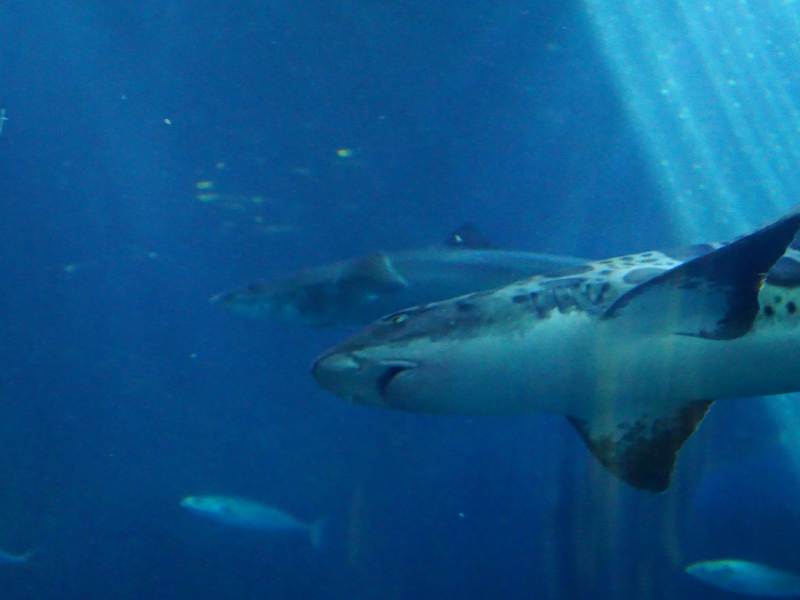
The International Union for Conservation of Nature (IUCN) currently classifies leopard sharks globally as a species of Least Concern. This designation means they are not currently considered threatened with extinction.
However, several points warrant monitoring of leopard shark conservation status:
- Slow Reproductive Rate – Females only give birth to litters of 2-13 pups every other year on average after a gestation period of 10-11 months.
- Vulnerable to Overfishing – Their life history makes recovery from heavy fishing pressures difficult as populations can decline rapidly.
- Incidental Catch Impact – Leopard sharks are sometimes caught unintentionally by nets/lines targeting other species.
- Coastal Development Threat – Loss of important nursery habitats like eelgrass beds impacts young sharks’ survival.
While not currently at risk, leopard sharks could see declining numbers if human impacts are not managed responsibly going forward. Fisheries managers aim to ensure sustainable leopard shark numbers through regulations while efforts also protect vital coastal ecosystems these unique sharks depend on.
Concluding Thoughts
Leopard sharks play an intriguing ecological role in temperate coastal waters worldwide. Though facing threats as both predator and occasional prey, these fascinating bottom-dwellers have persisted through evolutionary adaptations.
Their conservation remains important to maintain balanced ocean food webs. With responsible stewardship of fisheries and habitats, leopard sharks should remain a common part of the marine landscape for generations to enjoy observing in calm shallow waters.
